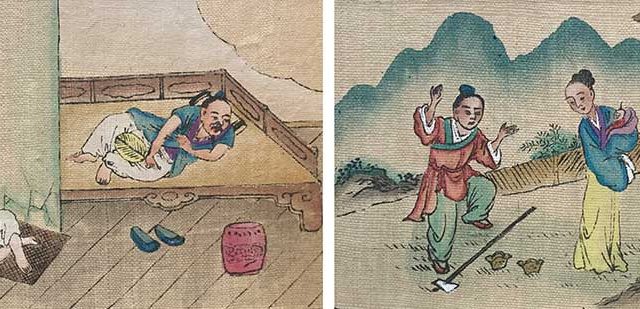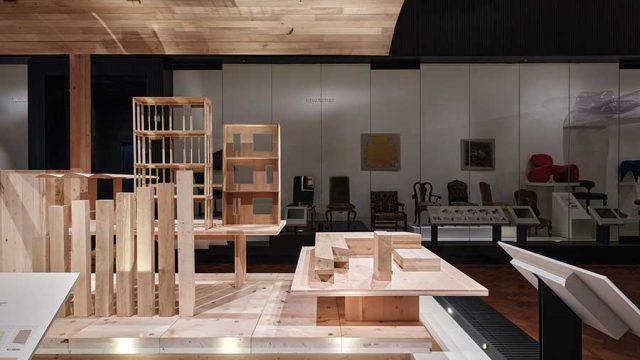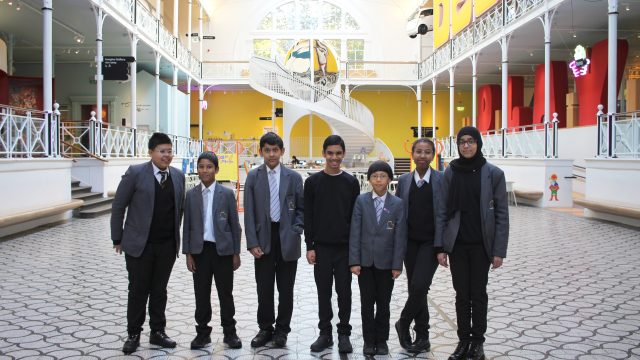
In May 2011, Madrid’s protest camp became the first Western example in the wave of protest camps that would occupy central squares of cities all around the world. This settlement was named #Acampadasol [Suncamp] on Twitter, because of its occupation of the Puerta del Sol [Gate of the Sun], one of Madrid’s emblematic centres. The square, turned for a while into an intentional community of activists, was populated by a heterogeneous and changing crowd. In pure DIY style, they built a complex structure of grassroots urbanism, demonstrating how an alternative society might look.
Between May 15 and June 12, the square became a site of collective creativity. One of the main activities involved the continuous production of self-made banners and placards. Exhibited in the square, they contributed to the reclaiming and re-symbolising of the space. Although banner-making took place all around the square, a Graphic and Visual Arts Committee worked systematically to create banners and other symbolic elements for display.

Taken together there was such an excess of these items that many were never displayed in the square and ended up being given directly to an Archive working group.

On May 20, an Audiovisual Archive put up its own stall, asking for materials related to this encampment. It became known as Archivo 15M, the 15M Archive.

By documenting what was happening at the very moment that it was taking place, history became a work in process. During the camp, working groups and committees donated the materials that they no longer needed. When the Acampadasol was dismantled on June 12, the 15M Archive collected all the remaining banners, placards and other objects, and has continued to work with them during the following years.
The 15M Archive works through self-organization and is self-financed by its members. Its functioning is horizontal and decisions are taken through assemblies based on consensus. It is not just an archive about activism, but also an activist archive, part of the 15M social movement that grew out of the camp.
1. MATERIALS
The 15M Archive keeps a compilation of audiovisual material (photographs and videos), as well as a great variety of physical elements: press cuttings, posters, pamphlets, signs, letters, dummies, objects, organizational documents (assembly records, maps, charts), and – especially fascinating – thousands of banners and placards. These are made of different materials, and include spray-painted bed sheets.

Cardboard became an omnipresent material. Its abundance was largely a consequence of the central location of the square, surrounded by big commercial stores that generate a particular kind of rubbish, mostly the remains of packaging. In the Sol Camp, cardboard served as insulation, as construction material and as a support for placards, lending its ochre colour to the protest landscape.

Many banners and placards were made out of paper. In general, there was a profusion of precarious materials, mostly brought from home or collected from the streets. Rubbish was creatively reused to build another possible world.

The banners used a great mix of materials, infinite calligraphies, and an enormous variety of messages, balanced between consensus and contradiction.

It is possible to read the camp through the banners, placards and posters kept by the 15M Archive, which has made high-quality photographs of most of them. But faced with this almost unclassifiable compilation of overflowing language, many readings are possible. Attempting to trace paths through this complexity, attention can be focused on: material related to the organisation of the camp, the protesters’ proposals, the defense of the welfare state and creation of the commons, opposition to the established political system, defiance, the crisis of representation, the creativity, humour and vitality which characterised the Sol camp and, finally, its internationalism.
2. ORGANISATION OF THE CAMP
The archive keeps many documents that allow the reconstruction of the protest camp’s occupation of space and its ways of practical organization. A good example is represented by the various maps of the camp. Cartographies were constantly being drawn in the square, in a frustrated attempt to represent a reality that was in perpetual motion. Mapping tried to advance at the same rate as construction, but its representations were out of date almost instantly in the face of the Camp’s frenetic expansion. The maps are documents that, at the time, allowed people to orientate themselves within the complex space of the activist settlement, and which today have come to function as snapshots that show the impressive heights of spatial organization that was attained.

While growing organically, the Camp always maintained a series of pathways. There was also a division into zones which separated some of the spatial functions: areas for sleeping (the actual camp, strictly speaking), the area for rest, and the perimeter reserved for the daily General Assemblies were clearly marked out. The West zone was always kept free, to allow the presence of ambulances in case any problem should arise.

Just as in the squatters’ social centres – whose functioning partially provided a template for the Sol camp – posters addressed the practical necessities of each moment.

3. PROPOSALS

Beyond the materiality of the camp itself, a large number of banners and placards presented possible solutions to the country’s problems. Taken together, they represent an impressive body of collective political thought.


4. DEFENDING THE WELFARE STATE, CREATING THE COMMONS.

In the face of cuts to social spending, working groups such as the library, the nursery and healthcare, took up roles that traditionally belonged to the welfare state. Some banners called for the state to take responsibility for its citizens.

Others tackled ideas about the commons, where resources and social responsibility could be shared through self-management in a horizontal manner, without top-down management. By organizing itself, the multitude could take care of itself: in its daily life, the Camp presented this form of social management as a possibility. As a place of performative encounter, it collectively staged – in microcosm – a world without rulers.

5. OPPOSITION
Social change always has two dimensions: one concerns the creation of a new world, and the other relates to the destruction of the old world. The YES and the NO. Many of the banners and placards in the Archive point again and again to the same problems: the privileges of the political class, the alliance between the political and economic elite, the chasm between institutional politics and the citizenry, the self-interested manipulation of the economic crisis, the growth of economic injustice and the parasitic nature of the governing classes.
![“POLITICIANS, BANKERS, COMPANY OWNERS, YOU ARE ALL THE ENEMY. M 22 [May 22, 2011, day of the regional elections], YOU ARE NOT FUCKING FUNNY”. Archivo 15M. CC “POLITICIANS, BANKERS, COMPANY OWNERS, YOU ARE ALL THE ENEMY. M 22 [May 22, 2011, day of the regional elections], YOU ARE NOT FUCKING FUNNY”. Archivo 15M. CC](https://s3-eu-west-1.amazonaws.com/vam-blog/dp-content/57ccb81bcd971c5c20d7d6cc801d8da8.jpg)
One of the names the press gave to the emerging social movement in the Spanish squares, was Indignados [Outraged], alluding to the book Indignez-vous ! (Time for Outrage! in its English translation) by the late French diplomat and writer Stéphane Hessel.

While it is difficult to identify common demands shared by all those camping in the centre of Madrid, there was a clear opposition to the political and economic system.

6. DEFIANCE
This opposition frequently took the form of defiance. A common affirmation in contexts where fear and empowerment coexist is: “We are not afraid”.

Some banners addressed the unpredictable character of insurrection, with its sudden tearing apart of pre-existing “normality”.

Referring to the repression of those sleeping and dreaming in the open air of the Puerta del Sol and central squares in other cities, some of the more poetic slogans quickly become famous.

7. CRISIS OF REPRESENTATION
The overabundance of direct individual expressions could be seen as another manifestation of the crisis of political representation, which in Spain has the added local characteristics of corruption in a system which some see as directly inherited from the Franco dictatorship which preceded it.

Protesters did not feel that Spain’s representative democracy really represented them. At the camp, the alternative approach of direct democracy was used, taking the performative form of massive assemblies that were attended by thousands of people.
The centrality of language in the camp could be related to its central role in the assembly-based system, where government is conducted through hours and hours of spoken words. In the square, many felt an overwhelming need to talk for themselves. Attempts to unify failed, and one of the few giant posters in the square spoke of this belief that no single element could speak in the name of everyone: a large area of canvas which had a portrait of Himmler with the ears of Mickey Mouse and a cap with the Euro symbol declared “No nos representan” [“They do not represent us”] in huge letters. It was hung from an enormous advertisement for a brand of shampoo.

Underneath this example of culture jamming, there was an enormous concentration of banners. In the Camp, written words invaded everything: hanging from the ropes that supported the canvas coverings, stuck to the walls of nearby buildings, on the tables of the committees, on the walls of their stalls. Posters, and the concepts they expressed, grew in a rhizomatic fashion, using space in a spontaneous way within a textual horror vacui. Deleuze and Guattari claim that rhizomatic organization is inherently subversive. The horizontal functioning of the Camp was translated into the horizontal arrangement of its messages. This also had much to do with a young population brought up with Web 2.0, where content is generated by users. The overabundance of essentially equivalent messages is proper to this phase of the development of the internet, where excess replaces exception.
8. CREATIVITY AND HUMOUR

The internet is a space where many feel free to develop their verbal imagination. Individual expressions in the camp were marked by creativity and many redefined the sense of what might be considered as a political banner.

In posters and slogans, the popular reclaiming of language had two dimensions: (1) recovering political language and restoring significance to words such as “democracy” or “crisis” and (2) reclaiming language as a vehicle for subjectivity and poetry, enjoying its playful-symbolic possibilities. Politics and poetics go hand-in-hand with humour.
Many play with metaphor: an example of such creative usage is the rhetoric of sol, both the name of the square and the Spanish word for “sun”, which becomes a synonym of revolution.

9. VITALITY
The camp, in spite of being born out of outrage, became a place of enthusiasm. Revolt does not sprout only out of misery: it is also born from the love of life, from the desire to build a more beautiful existence. Creativity takes the form of a vitality that speaks of the pleasure of revolution.

Many texts show verbal and political empowerment, which allows anybody to take charge of their own existence.

The uprising that demanded real democracy ended up generating a feeling of real life, away from the dream of conformity.

10. GLOBAL REVOLUTION
Almost immediately, the camp in Madrid sparked other camps all over Spain and then all over the world. Some banners were in other languages, creating a dialogue with other protest camps: Cairo’s Tahrir square camp, which preceded that of Madrid, was an unmistakable point of reference.

Social movements in Greece were a reference point for collective struggle in Southern Europe, for the fight of countries – derogatively labelled PIGS (Portugal, Italy, Greece and Spain) – that had been most affected by recession and austerity policies,

There were many messages in English, appealing to both official media and the internet, and calling for a global uprising.

Soon after the Madrid camp started, occupying squares as a form of political spread rapidly in Europe, and later in the US. Since 2011, the “Disobedient Settlement” in the centre of a city has introduced itself into the shared vocabulary of the forms of struggle. Art critic Brian Holmes, talking about the alter-globalization movement, said: “For the artists of another world, wherever they live and however they understand themselves, let these moments be counted among the hieroglyphs of the future. All around the world, people are still seeing how best to use these signs in order to collectively write a different kind of history.




Today I have read your posting. It is very interesting and informative post about printing services. We are also working in the same field at Las Vegas. We welcome you to visit our website. Thanks for nice information.